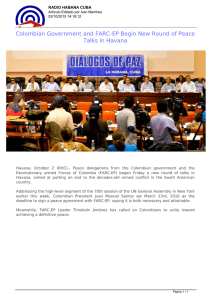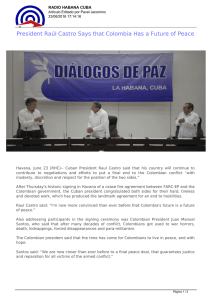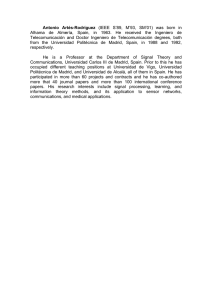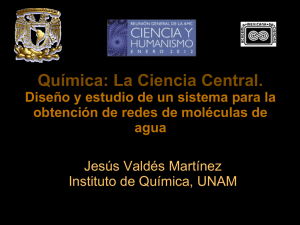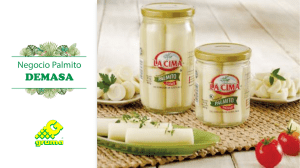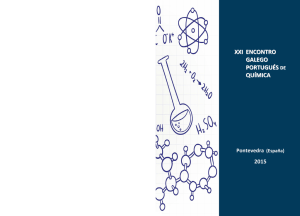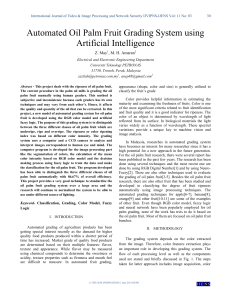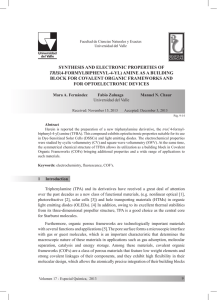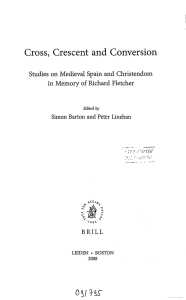Elizabeth Gil Archila - Pontificia Universidad Javeriana
Anuncio
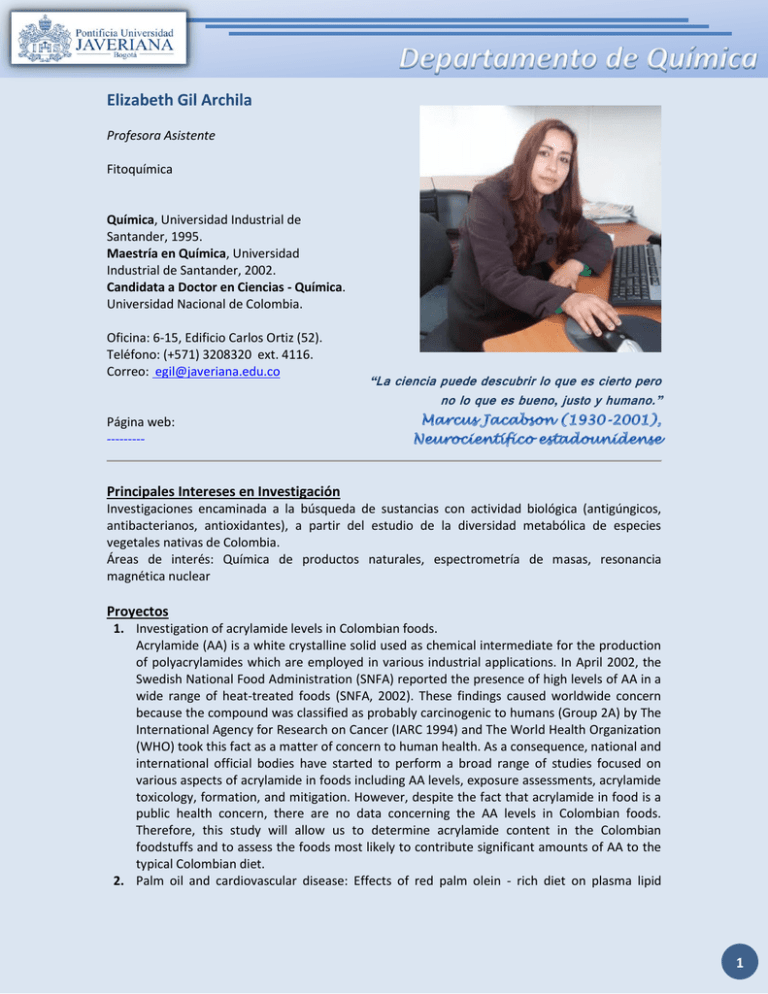
_ Elizabeth Gil Archila Profesora Asistente Fitoquímica Química, Universidad Industrial de Santander, 1995. Maestría en Química, Universidad Industrial de Santander, 2002. Candidata a Doctor en Ciencias - Química. Universidad Nacional de Colombia. Oficina: 6-15, Edificio Carlos Ortiz (52). Teléfono: (+571) 3208320 ext. 4116. Correo: [email protected] “La ciencia puede descubrir lo que es cierto pero no lo que es bueno, justo y humano.” Página web: --------- Principales Intereses en Investigación Investigaciones encaminada a la búsqueda de sustancias con actividad biológica (antigúngicos, antibacterianos, antioxidantes), a partir del estudio de la diversidad metabólica de especies vegetales nativas de Colombia. Áreas de interés: Química de productos naturales, espectrometría de masas, resonancia magnética nuclear Proyectos 1. Investigation of acrylamide levels in Colombian foods. Acrylamide (AA) is a white crystalline solid used as chemical intermediate for the production of polyacrylamides which are employed in various industrial applications. In April 2002, the Swedish National Food Administration (SNFA) reported the presence of high levels of AA in a wide range of heat-treated foods (SNFA, 2002). These findings caused worldwide concern because the compound was classified as probably carcinogenic to humans (Group 2A) by The International Agency for Research on Cancer (IARC 1994) and The World Health Organization (WHO) took this fact as a matter of concern to human health. As a consequence, national and international official bodies have started to perform a broad range of studies focused on various aspects of acrylamide in foods including AA levels, exposure assessments, acrylamide toxicology, formation, and mitigation. However, despite the fact that acrylamide in food is a public health concern, there are no data concerning the AA levels in Colombian foods. Therefore, this study will allow us to determine acrylamide content in the Colombian foodstuffs and to assess the foods most likely to contribute significant amounts of AA to the typical Colombian diet. 2. Palm oil and cardiovascular disease: Effects of red palm olein - rich diet on plasma lipid 1 _ pattern in hypercholesterolemic patients. Cardiovascular disease is the main cause of death worldwide at the turn of the XXI century.The World Health Organization in its report (2003) states that there is convincing evidence that palmitic oil consumption contributes to an increased risk of developing cardiovascular diseases. In this context, palm oil was attacked since it is a rich source of saturated fatty acids. Howevr, while the effects of palm oil on CVD risk factors have been relatively well investigated in the past, there are very few studies concerning the effects of red palm olein and the results obtained are highly inconsistent and controversial. Publicaciones Relevantes 1. ELIZABETH GIL, GIOVANNY FAGUA GONZALEZ, JORGE ROBLES CAMARGO, JULIANA DURAN PRIETO, "Sequestration of Aristolochic Acid I from Aristolochia pilosa by Mapeta xanthomelas Walker, 1863" .Journal Of Chemical Ecology ISSN: 0098-0331 ed: Springer Ny.v.38 fasc.10 p.1285 - 1288 ,2012 2. GUILLERMO FEDERICO PADILLA GONZALEZ, ELIZABETH GIL, "Actividad antibacteriana de extractos y fracciones de hojas de Siparuna sessiliflora Kunth A. DC. (limoncillo)". 3. Revista Cubana De Plantas Medicinales ISSN: 1028-4796 v.17 fasc.1 p.65 - 72 ,2012 4. ELIZABETH GIL, EDGAR GONZALEZ, NOHEMI TELLEZ, CLEMENCIA DE CASTRO, TULIA RIBEROS, FRANCISCO GONZALEZ, "Citotoxicidad in Vitro de células tumorales con nanotubos de carbono de pared simple activados con ácido polisulfónico maminobenceno y con polietilenglicol" . Universitas Médica ISSN: 0041-9095 ed: Editorial Pontificia Universidad Javeriana v.49 fasc.3 p.317 - 327 ,2008 . 2

